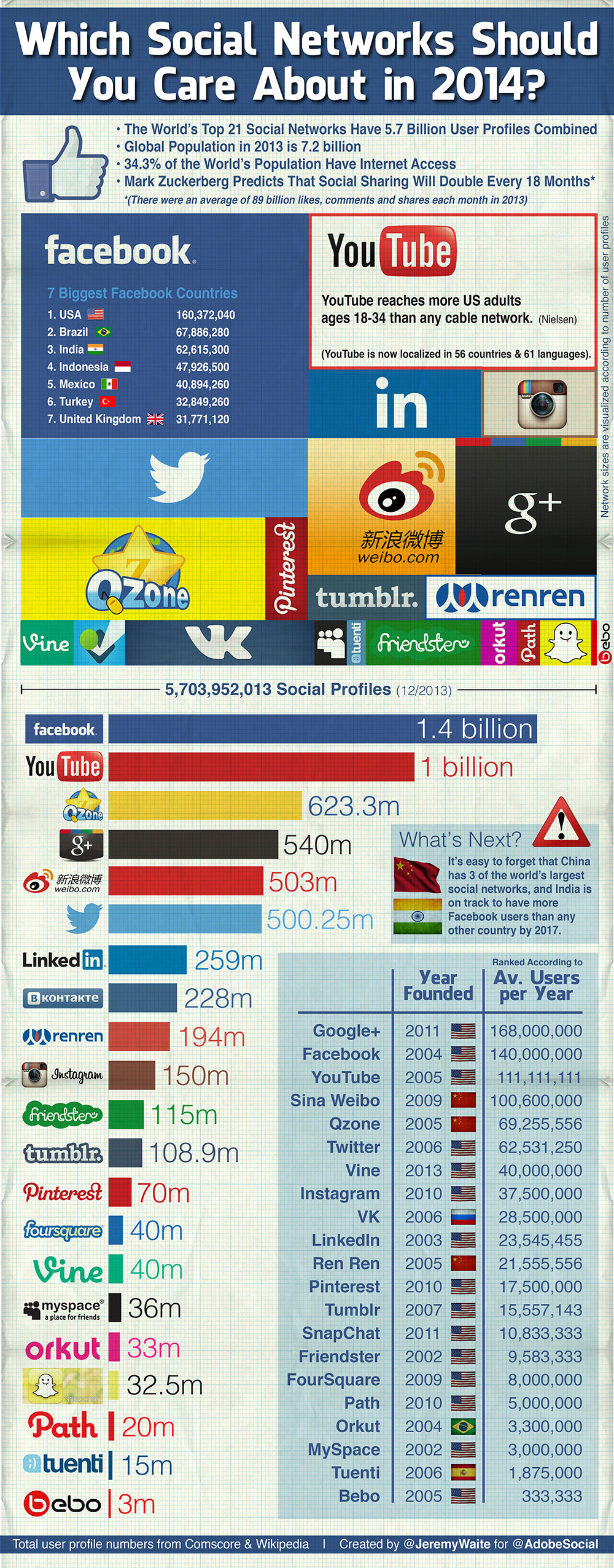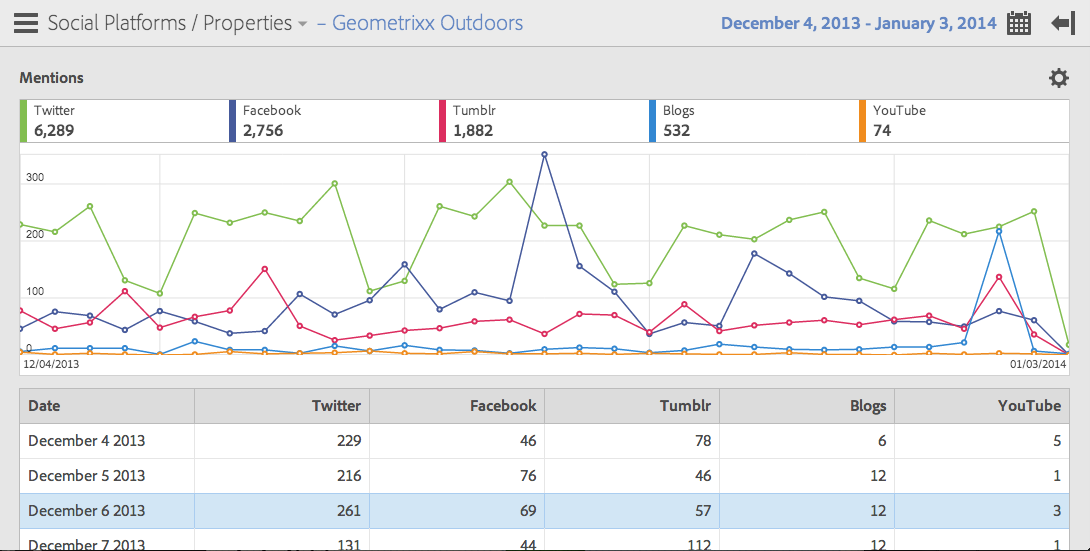It’s hard to believe that Facebook will be ten years old this February and yet social media still seems new to many of us. Brands are struggling as much as they ever have done to understand what to do with it, and which networks actually have any real value. I noticed a number of social challenges that brands faced in 2013 but probably the two most common questions I got asked were:
The answers to these questions are not as complicated as people often think, but neither is there correct answer to either of them. Many people have written blog posts suggesting that they have the answer — but rather than add my own opinions to that long list, I thought I’d just look at the data to see where the world seems to have been spending it’s time over the last 12 years. (Infographic created in Adobe Photoshop obviously!)…
I’ve purposely focused here on the** total number of user profiles** for each network*. I did this purely for the sake of comparison (rather than daily / monthly active users), so before anyone bursts a blood vessel and calls me out in the comments, let’s save the messy debate around active v inactive fans for another time. All I want to do here is look at which social networks people have chosen to join over the last decade or so.
- There are almost as many social profiles just among these 21 networks, as there are people in the world!
- Many business people forget that China has 3 of the world’s largest and most powerful social networks. (Sina Weibo for example has the same market penetration in China that Twitter does in the US).
- Some of the Middle Eastern brands I spoke to last year told me that YouTube was far more valuable to their brand than either Twitter and Facebook, and they built their social strategies accordingly.
- Many Spanish brands have chosen to focus their efforts on the local network Tuenti instead of Facebook.
- The oldest social network on the list Friendster, has a surprisingly large and active fan base (admittedly now with a different purpose than it was created for).
- Bebo is still going and planning to be properly re-launched again by original co-founder Michael Birch.
- Google+ (the network we all like to poke fun at), has become the place for commenting on YouTube.
- Market analysts suggested in 2013 that Pinterest (not even 4 years old), had double the click-through-rate of Twitter and drove 2x the average order value of Facebook, even though it only has 5% of the user base.
- Russian network VK is bigger than Instagram globally with a massive 228m registered users.
- SnapChat (hacking issues aside), 2013 saw more photos distributed on SnapChat (up to 400m each day) than there was on Facebook.
- But… old-timer Orkut (the forgotten Brazilian network owned by Google) is still “bigger” than the trendy new kid on the block SnapChat.
In truth, noone should be telling you where to spend your time, budget and resources other than your fans. Just because a great article on Mashable might suggest that Pinterest is smashing all sales records for brand X, doesn’t mean it will do the same for you. Instagram and Twitter have recently shown impressive returns for brands experimenting with advertising, but it’s quite possible that their audiences behave completely differently than yours. It is for this reason that the social team at Adobe always encourages brands to focus only on their own audiences — and to become obsessed with understanding what they are interested in, and how they behave.
I like to simplify this kind of audience analysis (and conveniently avoiding huge spreadsheets), by suggesting that brands should first look at just five key areas. I call them the “”…
- is talking about you?
- are they saying?
- did these conversations take place?
- did these conversations happen?
- did they happen?
It is the 4th_ (and possibly most important)_, “W” that I chose to focus on for this graphic. I’ve done this because I spent a lot of time in 2013 highlighting important conversations to brands that they weren’t aware of — on networks that they weren’t monitoring closely enough. It is for this reason that I encourage every brand to examine their fan base, and look at EVERY mention of their brand on a regular basis, in order to understand which networks matter most to them. This kind of audience analysis helps brands to make better business decisions by revealing valuable insights such as; Which countries and languages are the most relevant? What are the common topics among each different audience segment? What trends are developing? Which conversations drove the highest engagement and which mentions delivered the most sales? (I wrote more about this in Adobe’s “Like-Cycle” white paper) earlier last year.
My final point is simply a friendly word of caution… Social networks are the one place where people share the things they are most passionate about. Whether is is sharing an exciting piece of content or responding to something provocative, emotions drive behaviour online. Seeking to connect with their audience, I often see social marketers making decisions about content or conversation strategies, based around emotion rather than facts.
What marketers need to be mindful of is that their emotions don’t cloud any decisions they make around their social strategies, or how they think they should reach their fans. By that I mean that a strategy (in any area of business not just social media), should never be based upon personal opinion, bias or emotion. Successful strategies should be built upon interpreting accurate insight from your audience — and not from any assumptions or “gut feelings”. Only when you have that data at your disposal and you are able to understand it, should you go about creating relevant and exciting content for each social network. And the brands with the best understanding, will always have the most passionate and engaged audiences.
*_ (I personally believe that email was social a long time before any of these. I also think of Skype, XBox Live, Playstation Network or powerful messaging app’s such as Japan’s Line as “social networks”, but I’ve left them off here. Again thats a feisty discussion for a different time…)_
** There are many social listening tools on the market which claim to help you track the value of social relationships (we obviously believe that Adobe Social is the best!). What is important for you, is to know which networks and customers care about — not just which social networks you think are important.


